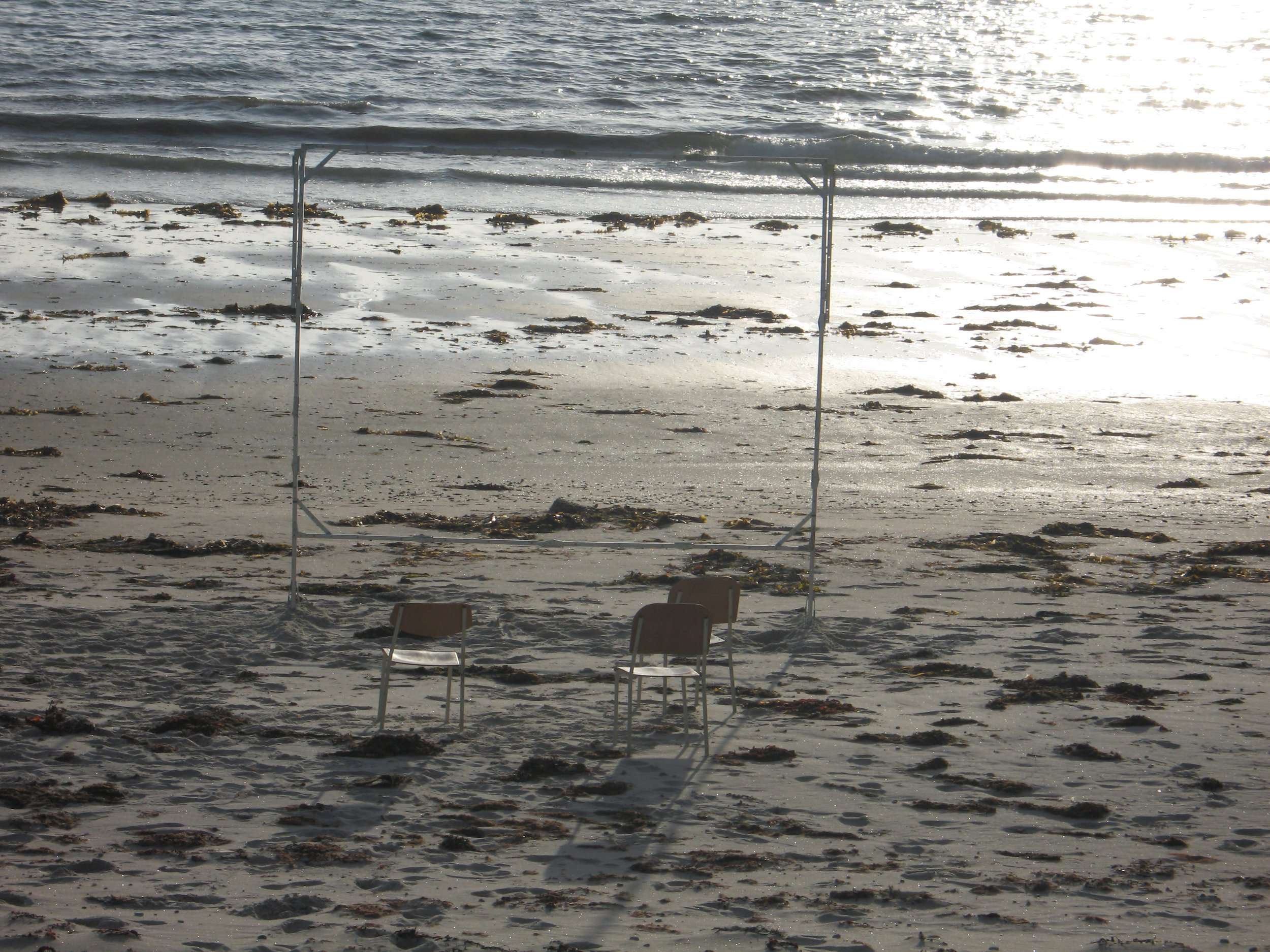JUKSA
2006
Public art project and video installation
Loop: 29’49” | Variable dimensions
Commissioned by Maaretta Jaukkuri for the Lofoten International Art Festival in 2006, this monochannel videoprojection has a lenght of 30 minutes. Juksa shows three different moments in the lives of three people, within a period of 33 years, at the small island of Fugløya by the coast of Norway, almost at the North Pole. Dias & Riedweg filmed Berentine I., Bjorn P. and Hanne T. in May and in June 2006 and collected archive pictures of the Norwegian TV, done with these same three people in 1973. Since then, the activity of Fishing slowly ended and the video portray the impact of this change on their lives. The very last people are moving out of the island now.
Departing from this specific context, images of micro-landscapes, editing manipulations of speed and formal suggestions of absence build up universal reflections about time, about aging of people and of places - the word „Juksa“ actually names one of the oldest ways of Fishing in the world. The piece was first screened, exclusive to the participants, on the sands of Sørfugløya and accompanied by the song „The Plaint“ by Henry Purcell (1659-1695) sung live à capela by Marianne Schuppe. This scene was also integrated to the final version of the piece.
This video won the main prize at The Video Brazil Festival 2007 and received the Werkbeitrag Kunstkredit Basel, in Switzerland, also in 2007.
Installations: Lofoten International Arts Festival, Fugløya and Lofoten Islands, 2006; Mørke Nu, Bodø, Norway, 2006; Kunstkredit Werkjahr 2016, Basel, Switzerland; Jury Prize Video Brasil Festival, Sao Paulo, 2007; Kunstnernes Hus, Oslo, 2008, Norway; Instituto Tomie Ohtake, São Paulo, Brasil, 2009; Bonniers Konsthal, Stockholm, Sweden, 2011; Sorlandets Kunstmuseum Kristiansand, Sweden, 2012; Kunstmuseum Trondheim, 2012, Norway; Museu de Arte Moderna da Bahia, Salvador, 2012; Centro de la Fotografia, Mondevideo, Uruguay, 2013; Nikolaj Kunsthal Copenhagen, Denmark, 2013.

Meetings, conversations, tensions, conflicts, confrontations, negotiations with real people: it is from this “raw material” that Mauricio Dias and Walter Riedweg extract their numerous works since the early 1990s, through the construction of “relational devices” closely linked to context in which they will act. It is an artistic production in which interaction with the other does not only happen at the time of exhibition in museums and galleries, in propositions to the spectator in art spaces, but it is the starting point, the "active" principle, the provocative element, that without which the works would simply not be able to exist.
CONSUELO LINS FOR THE DIAS&RIEDWEG FF DOSSIER AT THE WEB PAGE OF VIDEO BRASIL, SAO PAULO, 2007
THE Process






































































